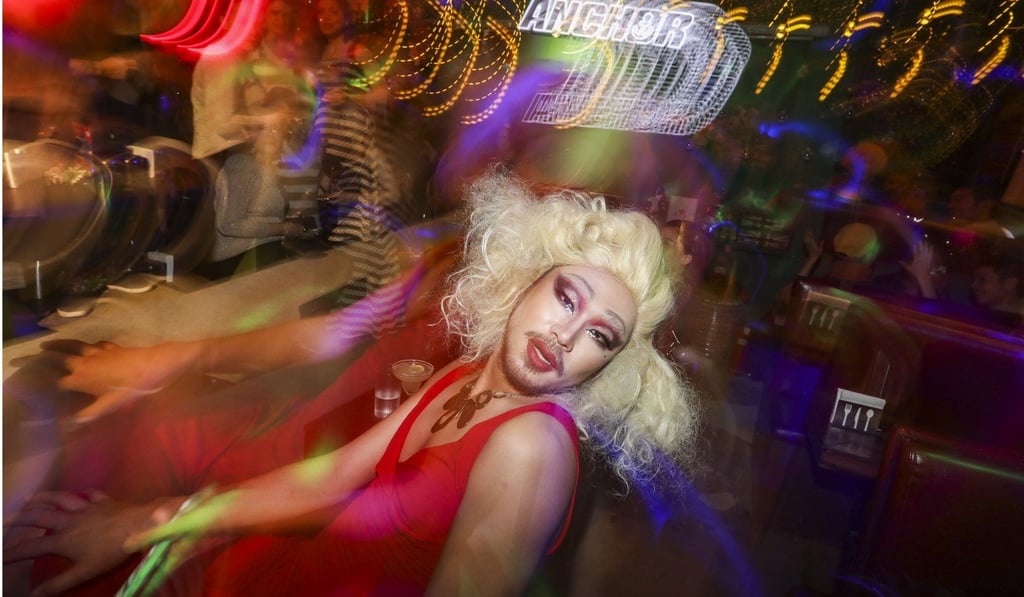Drag queens of Beijing strut their stuff while they can, fearing a Chinese government crackdown
- The Anchor gay bar in Beijing’s Chaoyang district hosts fortnightly drag queen shows in front of a raucous crowd
- In high heels, wigs and corsets, the likes of Lola Du Jour, Krystal de Canteur and Elizabeth Stride perform their racy routines

The audience is roaring at the jam-packed Anchor bar in Beijing’s Chaoyang district. Lola Du Jour is about to start her performance alongside Anita Schwanz.
But first, a word of warning from Lola: “Ladies and gentlemen, before we start the show, remember the three rules: do not touch the queens unless they touch you first; address all queens by their full drag names or ‘Your royal Highness’ – never by their boy names; do not forget to tip your queens.”
The two drag queens hit the catwalk, prancing about on nine-inch (23cm) heels, flirting with the audience and lip-syncing to carefully chosen songs.
Lola is wearing a beautiful turquoise gown, while Anita has opted for a revealing nurse’s outfit, and gives it all she is got on stage while offering the audience sips of vodka from her prop – a large syringe.

Anchor’s manager, Sherry Zhao, looks pleased. She has been running the gay bar for four years but drag shows are a relatively new, and hugely popular, addition. Anchor puts on the shows every second Thursday. Zhao, a strong supporter of the drag community, has dressed up in the spirit of the night.
Miss Fiona is watching the performance from a table near the wall. Her real name is Richard Dong, a 27-year-old man from Guangdong province in southern China.